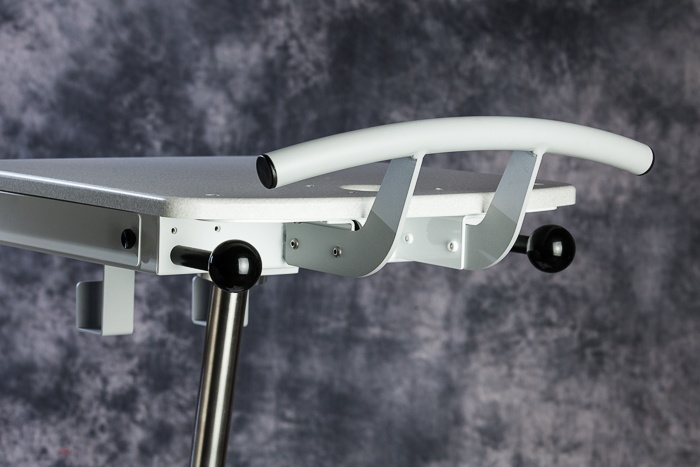Who hasn’t accidentally clipped the corner of aisle five or a misplaced food stand with a heavy shopping cart? When a majority of the weight is placed on the far end of your shopping cart, it takes a lot more torque to steer, causing a decreased sense of agility. Perhaps you’ve noticed in recent years that shortening the length of shopping carts has become more popular. This lessens the rotational inertia, so less energy is needed to move the shopping cart. This seemingly simple redesign allows for better weight distribution, alleviating issues regarding maneuverability.
Similar thinking can be applied to medical carts.
Handle and Caster Combination
Of course, we can’t make all custom medical carts more amenable to weight distribution in the same way, but we can compensate with handle and caster combinations. When swivel casters are on the same side as the handle, it’s easier to steer a heavier cart. However, lighter medical carts will be easier to steer when the handles are on the same side as rigid or directional casters.
Pulling vs. Pushing
As any factory safety video will tell you, pushing is preferable to pulling. Pulling a medical cart limits visibility, can put your body in an awkward position resulting in unnecessary straining or injury and opens the possibility of running over your foot or losing control. According to a guide on workplace ergonomics published by Darcor Casters and Wheels (see link at the end of this blog), studies show that people generally have the ability to exert higher push forces than pull forces. Therefore, designing handles that are conducive to pushing is elemental in contributing to a safer work environment. Understandably, pulling a medical cart may be necessary for broaching some thresholds, but incorporating a kick plate, should this be a concern, is just as effective.
Usability
The goal is to make your custom medical cart as user-friendly as possible, which means finding the optimal height and width for people of a wide variety of height and strength. An ideal grip should consist of the end user's fingers and palms touching the handle without overlapping (The Guide to Workplace Ergonomics).
In some cases, handles may be designed for more than one purpose. Handles can add to the overall aesthetics of your medical cart or may be used for cable management. Make sure your handles don’t extend the width of your medical cart. This prevents your hand from getting pinched between hard surfaces.
For a more in-depth analysis on handles and ergonomics of manual material handling, check out this downloadable pdf by Darcor Casters and Wheels.
Handle design presents innumerable opportunities regarding custom medical cart aesthetics and functionality. To learn more or request information, contact us today.


